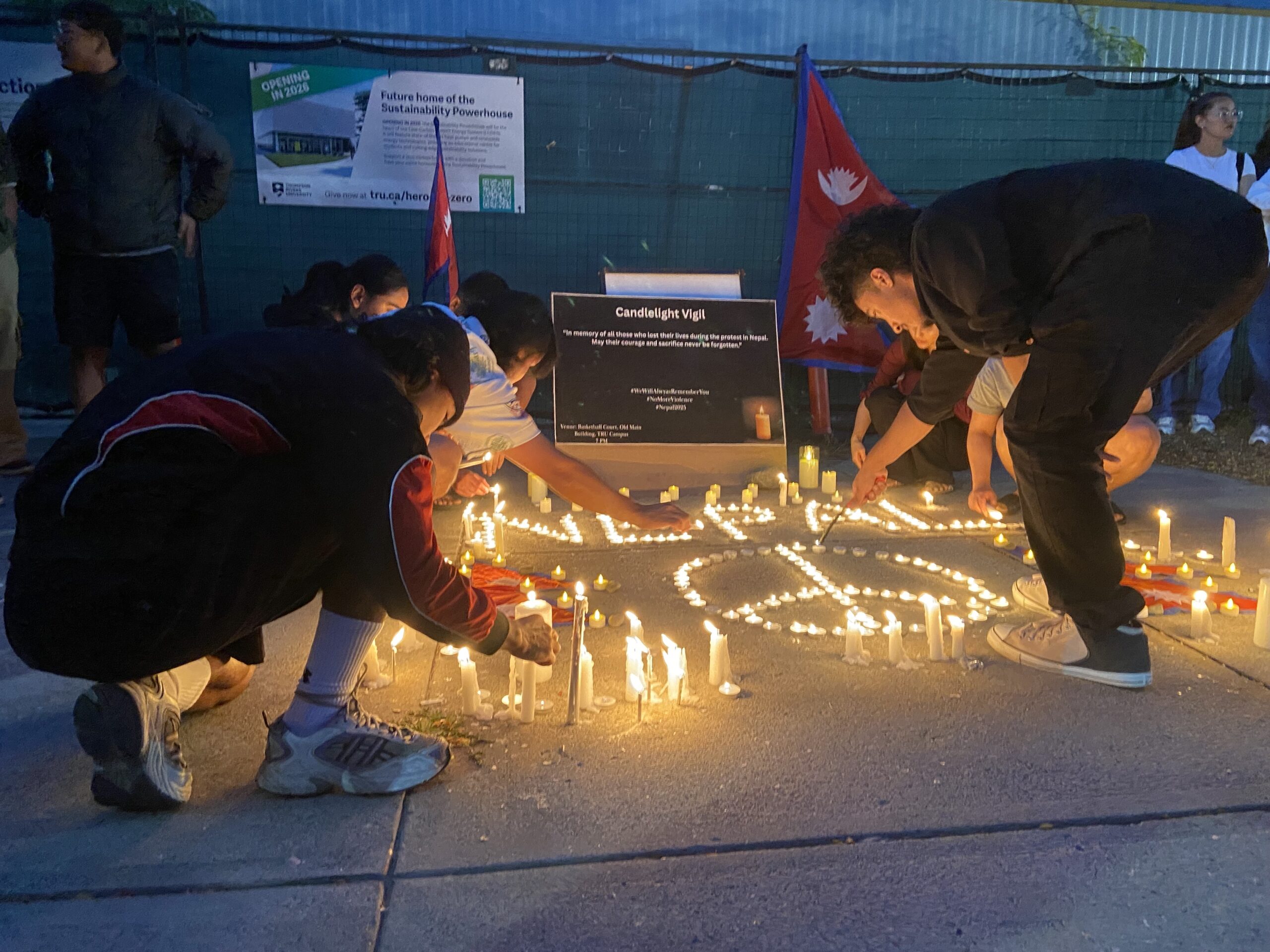Early in September, over the course of 48 hours, the people of Nepal felt their lives flip upside down, as allegations of corruption and censorship by the Nepali government kicked off massive and widespread protests.
The Nepalese community within Kamloops gathered outside of Old Main in the evening of Sept. 9 to organize a candlelight vigil, mourning the loss of the 19 people who died and the 340 who were badly injured during the so-called Gen-Z protests that began on Sept.7.
Protesters, mainly aged 21-27, took to the streets of Kathmandu, igniting the aptly named Gen-Z protests. The movement was sparked after a social media ban took effect at midnight on Sept. 5. All major social media apps were banned, except for TikTok. In their retaliation, the government responded with brute force, using water cannons, expired tear gas, and lethal rounds.
The vigil brought together over 100 people, united in solidarity and grief, to light candles in place of their fallen Nepali citizens.
“Originally, we were supposed to have a solidarity march with those who are protesting in Kathmandu and then the candlelight vigil after,” Paudel told the Omega. However, with the rapid turn of events in 24 hours, Paudel was unable to obtain permission from the city of Kamloops, among other reasons.
“On top of that, we do not stand for any violence that is happening in Nepal. To do a solidarity march would bring out high emotions that could lead to more chaos. I believe we can solve these problems with peace,” Paudel said.
Before 1951, Nepal was ruled by the Rana dynasty through hereditary prime ministers until pro-democracy movements overthrew them, creating a parliamentary system. The leader at the time, King Mahendra, banned parties in 1961; however, the frustrations led to the 1990 People’s Movement, which restored multi-party democracy. Later, in 1996, a civil war broke out between the Maoist party and the King, which lasted 10 years, resulting in more fatalities and destruction, causing strife in the daily lives of citizens.
The people of Nepal have suffered generational trauma for far too long, and on Sept. 5, it was the point where their pot had boiled over, again.
“Social media plays a big role in our politics, and with the same government for the past forty years, Gen-Zers were getting tired of it. Once they banned social media, that was like our voice,” Paudel said.
Following the protests, Sushila Karki, the first female Chief Justice of the Supreme Court of Nepal, was named interim Prime Minister of the country after former Prime Minister K.P. Sharma Oli stepped down. According to the New York Times, Nepal will hold elections in March to determine the country’s next leader.

